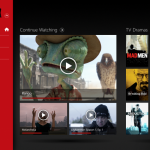 Last week, one of our classes was focused on entrepreneurs and startup companies. Interestingly enough, just yesterday I read an article that connected with these concepts. The article was about Shnarped Hockey, an app created by a recent graduate from UBC. Shnarped Hockey, “connects professional hockey players and fans . . . the core feature, ‘the pound’, allows fans to send players a virtual fist-bump in real time after a game well-played” (“Ubc grad scores,” 2013). Through this app, you can also watch game highlights and read related articles. The founders of the app even appeared on an episode of Dragon’s Den! “Together with his co-founder, Kyle Hagel, Sproat went on the show asking the investors for $100,000 for ten per cent equity in their company. They walked away with $250,000” (“Ubc grad scores,” 2013). Cole Nakatani, one of our guest speakers, spoke to us, and an interesting thing he said was that not a lot of the successful entrepreneurs grow up knowing that they are going to start a successful company. He said there is many different career paths an entrepreneur can take, and this article provides a great example of an unlikely path, as both Hagel and Sproat played hockey for the minor league teams of NHL franchises, and have now successfully created a startup. Hearing and reading about Sauder grads like Dustin Sproat, Cole Nakatani and Brian Wong has taught me that becoming a successful entrepreneur is indeed possible.
Last week, one of our classes was focused on entrepreneurs and startup companies. Interestingly enough, just yesterday I read an article that connected with these concepts. The article was about Shnarped Hockey, an app created by a recent graduate from UBC. Shnarped Hockey, “connects professional hockey players and fans . . . the core feature, ‘the pound’, allows fans to send players a virtual fist-bump in real time after a game well-played” (“Ubc grad scores,” 2013). Through this app, you can also watch game highlights and read related articles. The founders of the app even appeared on an episode of Dragon’s Den! “Together with his co-founder, Kyle Hagel, Sproat went on the show asking the investors for $100,000 for ten per cent equity in their company. They walked away with $250,000” (“Ubc grad scores,” 2013). Cole Nakatani, one of our guest speakers, spoke to us, and an interesting thing he said was that not a lot of the successful entrepreneurs grow up knowing that they are going to start a successful company. He said there is many different career paths an entrepreneur can take, and this article provides a great example of an unlikely path, as both Hagel and Sproat played hockey for the minor league teams of NHL franchises, and have now successfully created a startup. Hearing and reading about Sauder grads like Dustin Sproat, Cole Nakatani and Brian Wong has taught me that becoming a successful entrepreneur is indeed possible.
Ubc grad scores big on cbc’s dragon’s den. (2013, October 31). Retrieved from http://news.ubc.ca/2013/10/31/ubc-mba-grad-scores-big-on-cbcs-dragons-den/
Image: (2013). Shnarped Hockey [Web Graphic]. Retrieved from https://twitter.com/shnarped




